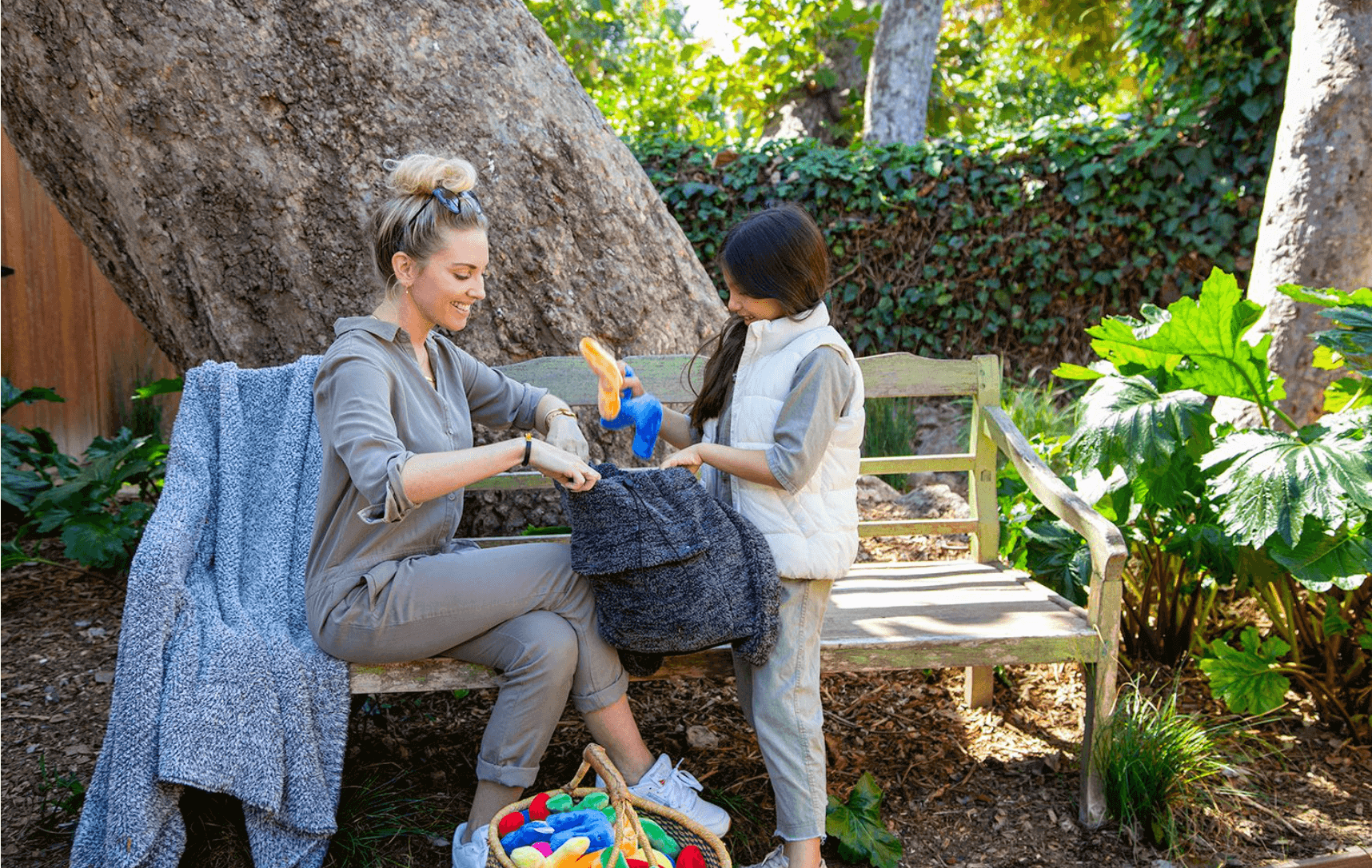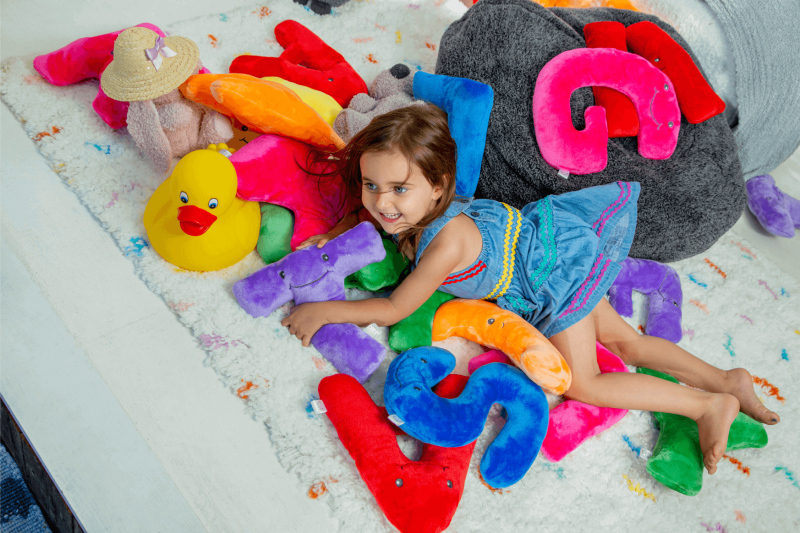
How to Read a Ruler: Comprehensive Guide for Kids
November 28, 2023
The lessons toddlers and preschoolers learn through early childhood development help shape their understanding of their world. They provide the basic building blocks to develop more complex skills. Teaching ruler reading is an essential foundational math skill that young children require to help them understand numerical values and measurements.
At an early age, children begin to notice the difference in size between objects. Learning how to accurately measure objects by reading measurements on a ruler gives children the ability to describe their environment in greater detail and communicate with others effectively.
Making learning engaging and enjoyable for children aged 2-5 is vital to achieve success. Young children learn through play, which is why you must find ways to include creativity, imagination, and fun in your lessons to capture the child's attention and get them excited to participate.
These early lessons will provide the tools they need to continue to learn and grow throughout their school years and into adulthood. Along with language development, numbers and math are necessary aspects of education that all children require to succeed.
This guide provides tips and effective strategies to assist teachers and parents in teaching ruler reading to young children to promote number recognition and math knowledge.
Why Ruler Reading Matters for Toddlers
Learning how to read a ruler is a basic measurement skill that contributes to cognitive and motor skill development. Assigning numerical values to objects allows children to accurately describe and compare objects, places, and people.
The act of using a ruler also provides practice for fine motor skill development as the child must align the ruler appropriately and understand the pattern of markings to read the measurement.
Children need this knowledge to understand the world we live in. Measuring the length of objects is important for later math and science lessons, as well as everyday life. Tasks like organizing objects, time-telling, and cooking all require measurement skills.
Learning about them in early childhood allows the child to gain a deeper understanding of their environment and easily move on to more complex skills that build upon prior basic knowledge.
Understanding the Challenges
Some of the aspects of ruler reading may pose a challenge for young children in the 2–5-year age range. A common problem is a failure to line up the zero mark at the start of the ruler's tick marks with the beginning of the object getting measured. Many rulers have an offset at the left side that you must account for to prevent an incorrect measurement.
Another challenge young children face is learning the value the tick mark patterns represent. Many children tend to position the ruler under an object and read off the tick mark that corresponds with the rightmost side of the object instead of looking at the actual distance measured. This is a problem if the ruler's starting zero isn't aligned with the left side of the object.
You can help your child overcome these, and other ruler reading challenges with plenty of practice. As with all educational endeavors, you must remain patient with your child and encourage their efforts through positive reinforcement to get the best results.
With time, practice, and understanding, you can assist your child through any challenges until they master the ability to read a ruler.
Breaking Down Ruler Reading for Toddlers
Use these simple steps to teach young children how to read ruler lines:
Emphasize that rulers are read left to right like a book.
Point out the large numbers that label the ruler. If the ruler has an offset on the left, it should begin with 0 and increase by 1 at every inch mark. If the markings begin at the left side, the ruler won't have a zero.
Point out the tick marks between each inch section. Notice how the half-inch mark is longer than the rest to make it easier to get an accurate reading.
Align the zero (or left side) of the ruler with the left side of the object you want to measure.
Count out the line markings until you reach the right side of the object to get your measurement.
Start with simple measurements of whole numbers, then progress to half-inch measurements, before moving along to smaller increments.
Practice measuring with toys, snacks, and other fun objects. Once your kids get familiar with the concept, you can start to encourage them to measure unfamiliar objects.
Playful Learning Activities
After the child understands how to read a ruler, you can show them how to use ruler readings effectively to describe objects by playing interactive games and activities. Incorporating play into your teaching approach is a must to capture the attention of your child and keep their enthusiasm for learning high. A few activities to try are:
Make it a game by setting a time limit to measure objects.
Go outside and measure small objects like rocks and flowers. Use the measurements to discuss and compare the objects.
Try online games for an interactive, visually appealing approach to ruler reading.
Enhance your lessons on ruler reading by using Numberpals to increase understanding. Interactive tools such as these plush number sets give children a hands-on, multi-sensory experience that emphasizes the points you teach, making them easier to absorb.
Patience and Positive Reinforcement
Pave the way to easy ruler reading by adopting a strategy of patience and positive reinforcement. Praising good behaviors helps with growth and development. Conversely, harsh criticism can quickly cause an aversion to the activity, stress, and potential negative effects on mental health.
If you notice your child struggling, slow down and repeat the instructions together. Talk about what they find difficult and demonstrate the correct way to measure. Practice together until they understand.
Find ways to praise your child along the way to encourage their continued interest and participation. Ruler reading is a critical skill for children aged 2-5 to master as it helps them understand the world and communicate effectively about objects, all of which are important foundational skills for academic success.
When you begin teaching ruler reading, remember to stay positive, and patient, and keep your lessons engaging to keep your children invested.
Embrace the journey of nurturing these foundational skills in your young learners through fun and educational games and activities.
Numberpals are the perfect addition to lessons on reading a ruler. Further enhance the learning experience with other products from Alphapals like individual letters and alphabet sets. Incorporate both the plush numbers and letters into your classroom or home learning activities for the ultimate interactive learning experience.









